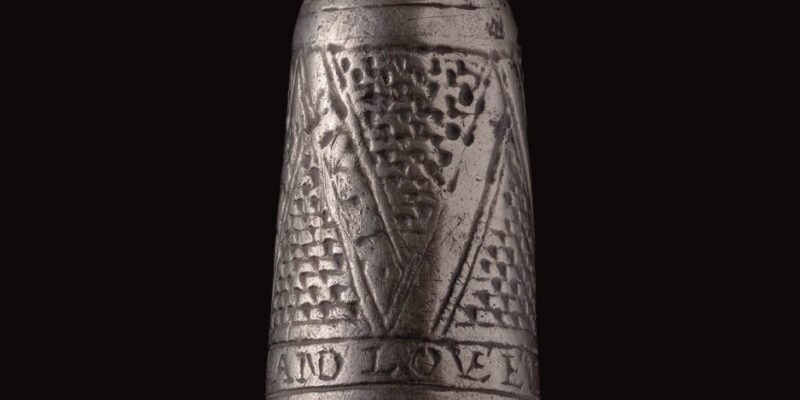
Metal detector enthusiasts are passionate about uncovering buried treasures. Typically, they spend hours scouring beaches or parks. Robert Edwards, though, decided to use his device at Carew Castle, and it’s a good thing he did.
What he found will go down as his best find ever.
“I was out detecting under the shade of an oak tree and was having no luck until I changed the program and found a great crisp signal,” Edwards said, according to Smithsonian Magazine. “At first I thought it may be a sixpence, but to my surprise it was something silver—and not a coin!”
Four treasure finds, including a Post Medieval silver pendant and a Post Medieval silver thimble, were declared treasure on Wednesday 13th March by H.M. Acting Senior Coroner for Pembrokeshire and Carmarthenshire, Paul Bennett, announced museum officials in Wales.
A Post Medieval silver pendant (Treasure Case 20.12) was found by Mr Nicholas Davies while metal detecting in Llansteffan Community, Carmarthenshire in July 2020. As a treasure find, the pendant was safely deposited to Amgueddfa Cymru for identification and reporting by Sian Iles, Curator of Medieval and Later Archaeology.
This double-sided medallion shows the profile of King Charles I on one side, facing right and with the Latin inscription ‘CAROLVS. D. G. MAG. B[RI. FR.]ET. HIB. RX’ around the outer border. The reverse side depicts Queen Henrietta Maria in profile, facing left. The inscription around the border this time reads ‘HENRIETTA MARIA. D.G. M.A.G. BRITAIN. FRAN. ET. HIB. REG’. The name ‘T. Rawlins’ is stamped beneath her bust. Both portraits are in a plain frame, with a suspension loop at the top and a single knop at each side.
Commemorative Royalist pendants such as this date from the 17th century. They were likely given to friends and supporters of Charles I throughout the Civil War. Almost identical examples can be found in the collections of the British Museum and the Royal Collections Trust, also with the mark of Thomas Rawlins. Rawlins was an engraver and medallist in the court of Charles I and was re-established in his post by Charles II following the Restoration.
Artnet explains that “the date of the thimble’s creation has been placed between 1682 and 1740. The treasure was built in two pieces and has six transverse bands in a zig-zag, over the top of a basket-weave pattern. This is a typical design for 17th-century thimbles in England and Wales, and it was the pattern that alerted Edwards that the heavy silver thimble was indeed ‘something special.’”
Originally built by Gerald de Windsor in the 12th century as a defensive fortress, Carew Castle played a crucial role in the Norman invasion of Wales. Over the centuries, it witnessed numerous battles and changes of ownership, eventually becoming a stately residence for the influential Carew family in the Tudor period. Despite its eventual decline and abandonment, the castle’s historical significance and architectural beauty continue to attract visitors, making it a cherished landmark in Welsh history.









